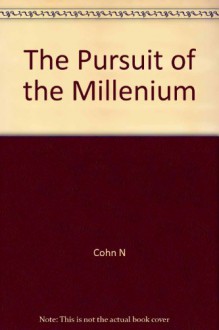
Sięgając po "Mężczyzn, którzy nienawidzą kobiet", złamałam jedną ze swych czytelniczych zasad – by trzymać się z dala od bestsellerów. Ale Kindla miałam wtedy od niedawna i należało coś na niego wgrać, a e-book był do wygrania w konkursie.
W "Millenium" się zakochałam. W postaciach, w skomplikowanej fabule, w nieznanym mi wcześniej szwedzkim klimacie, w stylu Larssona, szczegółowym i rozwlekłym, dokładnie takim jak lubię. "Millenium" zapoczątkowało moje zainteresowanie skandynawską literaturą (głównie kryminałami), zresztą wybuchła w tym czasie moda na te tytuły. Przeczytałam więc Perssona, Wagnera, Edwardsona, Nessera, Høvsgaarda, Blædel, Läckberg, Rosenfeldta i Hjortha, Nesbø, Åsbrink. W kolejce czeka Renberg. Co ciekawe, najlepsze wrażenie zrobiły na mnie raczej nazwiska spoza "Czarnej Serii", te raczej nie promowane. Arne Dahl z serią o zespole A (wydawanym w e-booku, ze względu na prawa autorskie, od 5 tomu), Gaute Heivoll z "Zanim spłonę", Jan Guillou ze "Złem". Także "Grzech pierworodny w Wilmslow" Lagercrantza wspominam z sympatią.
Ale żadna z tych książek, jak szybko zrozumiałam, nie jest "Millenium". Bo raz, że "Millenium" nazywane jest kryminałem niekoniecznie najtrafniej, a dwa – że to jednak inny kaliber. Historia stworzona przez Larssona, jak i jego styl, są wyjątkowe. Są inne. Wyróżniają się. Czy to znaczy, że Hesser czy Nesbø są źli? Oczywiście, że nie, bo nie o to mi w tym porównaniu chodzi. Chodzi mi o to, że "Co nas nie zabije" nie jest "Millenium" – jest jak wszystko inne. Jest kryminałem z "Czarnej Serii".
Pierwsza połowa tej książki niesamowicie mnie rozczarowała, właśnie dlatego, że odniosłam wrażenie, że czytam kolejny skandynawski kryminał. Lubię skandynawskie kryminały. I ten jest całkiem dobry. Zwyczajnie brakuje mu niesamowitości Larssona, co sprawia, że gdyby podmienić postaci, gdyby zrobić z tego zupełnie niezależną historię, prawdopodobnie bardzo by mi się podobała. Lagercrantz nie umęczył mnie tak jak Persson, nie było w nim takich językowych potknięć jak u Edwardsona (choć oczywiście trzeba pamiętać, że część to zapewne kwestia tłumaczenia). Lagercrantz potrafi pisać – stosuje zabieg z prezentowaniem tej samej sceny z punktu widzenia różnych postaci, co może się wydawać sposobem na zwiększenie objętości, ale po namyśle stwierdzam, że jednak mi się ta forma pisania spodobała, pozwalała na przedstawienie różnych perspektyw. Muszę też pochwalić fabułę i zaplecenie intrygi, bo ta rzeczywiście skojarzyła mi się z klimatem Larssona. Jest też dobrze rozplanowana i napisana, więc nie pogubiłam się w trakcie czytania. Ma wszystko, czego można by oczekiwać od tej opowieści – hakerów, mafię, wielkie pieniądze i rodzinne dramaty, a także sprzeciw wobec zła, które dotyka słabych i niewinnych.
Bo są takie momenty, gdy trochę ducha "Millenium" wyczuwałam – pojawiły się one w drugiej połowie książki, w rozmowie Blomkvista z Palmgrenem o dzieciństwie Lisbeth, rozmowie Blomkvista z Edem the Nedem, a także na sam koniec, gdy już intryga zostaje podsumowana. Pojawia się też najważniejszy wątek oryginalnej trylogii, mężczyźni nienawidzący kobiet. Zupełnie, jakby Lagercrantz pewniej czuł się wtedy, gdy nie musiał wymyślać własnych elementów, a jedynie odtwarzać dzieło Larssona.
Miłość do "Millenium" stawia mnie jednak w trudnej sytuacji. Nie wiem, na ile moje odczucia odnoszą się bezpośrednio do treści "Co nas nie zabije", a na ile są wypadkową sentymentu po lekturze sprzed kilku lat. Zresztą wiele osób narzekało, że to zwykły skok na kasę. Muszę powiedzieć, że po skończonej lekturze obudziła się we mnie obawa, że powstaną także kolejne książki z serii, o czym świadczą pewne napoczęte wątki. Wolałabym, żeby tak się nie stało, bo to jednak nie ten sam poziom opowieści. Sentymenty są mocne, domagają się uszanowania materiału wyjściowego...
Z drugiej jednak strony – czy tworzenie historii zależnych nie jest jedną z najpiękniejszych cech kultury? Czy te wszystkie "Rozważne, romantyczne i zombie", parodie i przeróbki, fakt, iż każda książka w Uniwersum Metro 2033 jest napisana przez innego autora, w końcu miliony fanfików do Harry'ego Pottera nie są znakiem prawdziwej miłości do literatury? Tak jest nie tylko z książkami, ale też filmami, serialami, grami. Nieustannie poszukujemy magii kryjącej się w fikcji. Wymyślone światy niezmiennie nas pociągają i pobudzają wyobraźnię. "Co nas nie zabije" nie jest najlepszą książką na świecie. Nie jest też godnym następcą "Millenium". Za to może być skokiem na kasę. Ostatecznie jednak wyrasta z tego samego uczucia co fanarty do "Supernatural" – z fascynacji historiami, które podbiły nasze serca.
Gdybym jednak miała coś Lagercrantzowi polecić, to by napisał własną serię. Po tej książce widzę, że potrafiłby to zrobić. A ja chętnie bym ją przeczytała. Może nawet bym ją pokochała.


 Log in with Facebook
Log in with Facebook 













